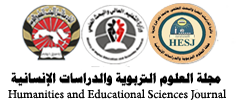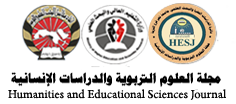The Verb in the Vernacular Dialect in Najd: Al Qassim Region as a Mode
Keywords:
The Verb, the Vernacular DialectAbstract
Scholars of Arabic have exerted great efforts in taking good care of their language, collecting their words in prose and poetry. They devised the rules of Arabic, and their first act was dividing speech into three parts; a noun, a verb and a letter. The linguistic features of Arabic remained visible in the dialects of Arabs, especially in Najd, which remained relatively isolated. In this research, the verb was studied in Najd, the Qassim region, as a model. It was studied in terms of verb types and formulations, in terms of the indication of time, in terms of morphological forms and inflection, in terms of infinitive and nonfinite verb, in terms of being abstract and augmented, and in terms of structures, in addition to the issue of assigning the verb to the pronouns. The study identified limited differences, and most of them were found to be originating from languages of some Arabs. For instance, adding the ‘yaa’ after the weakened letter when referring to the subject pronoun, the opening of the ‘fa’a’ in the glottal present tense, the treatment of the ‘la’am’ as incomplete, the scarcity of fa’ala’ verbs, the reduction of the abstract present tense, and transforming the remaining into “fa’ala” and “ya’afal” were all identified as features of verbs in Najd. Moreover, it was realized that they hamzat the present prefix in the triliteral infinitive abstract verb, and to break it in others. This is the opposite of what some Arabs used to drop hamzah of the present prefix in the triliteral infinitive abstract verb only.





